| |
|
A delightfully-set
church away from its village, a perfect choice to visit
on a day in the early spring of 2019. The large graveyard
with its three centuries of gravestones is a fascinating
place to potter about. The church is crisp and neat, and
was obviously given a thorough 19th Century going-over,
but there is enough to show that here is a church that
Norman in origin and was essentially completed before the
Black Death arrived in the mid 14th Century, with only
Perpendicular windows still to come. The Victorians were
restrained, and it is all done well and looking fine. It
is a taste of things to come, for you step into a church
which is obviously much loved and well-cared for. And yet
it is far from a run-of-the-mill interior.
Lewis Cottingham began the restoration here in the 1840s,
an early date for Suffolk, and his son NJ Cottingham
completed it after his death. The view to the east is
full of light, for the later Victorians were sparing with
their coloured glass, and the 1848 east window in
patterned glass with medallions in an early
ecclesiological style is perfect for its setting, as it
should be given that it was designed by NJ Cottingham
himself. The white light of the nave is a foil for the
early 15th Century font with its painted shields. They
show both ecclesiastical and secular powers, ranging from
the Diocese of Ely to the State of France. The odd one
out is to the local Despencer family who donated the
font.
In a lancet in the north wall are the two curious shapes
of medieval painted figures. The wall paintings were
exposed by the Cottinghams' restoration, and the
whitewash had been regularly renewed up to their outline.
However, over nearly two centuries the exposed figures
have faded completely, and only their faint ghosts in the
plaster show us where they once were.
The Heigham family are ubiquitous in this part of
Suffolk, and up in the chancel there is an elaborate
brass to Clement Heigham and his family . Heigham died in
1570, but the brasses have been set in the back of an
Easter Sepulchre of perhaps a century earlier. The 17th
Century memorials to Heighams in the chancel were
repainted rather garishly in 1969, which Pevsner declared
a misfortune. The font was repainted at the same time.
The benches are mostly modern, except for a couple
of endearingly rustic ones in the south aisle and some
bench ends up in the chancel. The early 21st Century
reredos on the south aisle altar depicts a pastoral view
of the church and its village, and replaces a rather
alarming 20th Century triptych of St Michael dispatching
a dragon in the prog-rock style of the 1970s that was
here when I first visited the church.
A picture hanging on the north side of the nave depicts
Mary Beale, perhaps the most successful of all female
English portrait painters of the late 16th Century. She
was born Mary Cradock in Barrow in 1633, the daughter of
the rector who was an amateur artist. She married a
friend of the Heigham family, and by the end of the
Commonwealth she had established her business in
Walton-on-Thames. They later moved to Hampshire, probably
because of the outbreaks of plague in London in the early
1660s. She wrote an instruction manual for other budding
female artists, and all in all seems to be someone that
we should all know more about. Also worthy of note is
that Barrow lays claim to be the parish where the last
wolf in England was killed.
Simon
Knott, January 2020
Follow these journeys as they happen at Last Of England
Twitter.
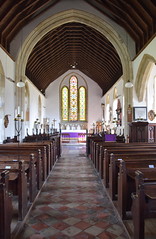 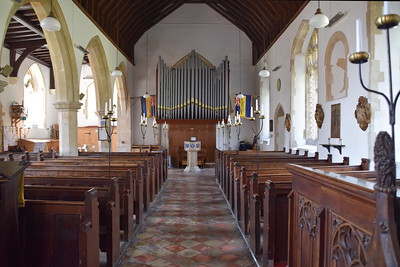 
   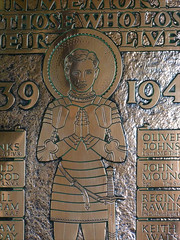
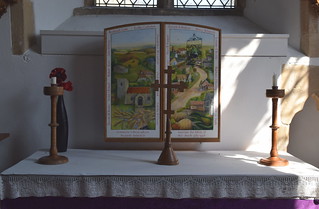 
  
 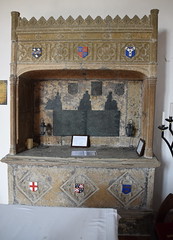 

Amazon commission helps cover the running
costs of this site
|
|
|

